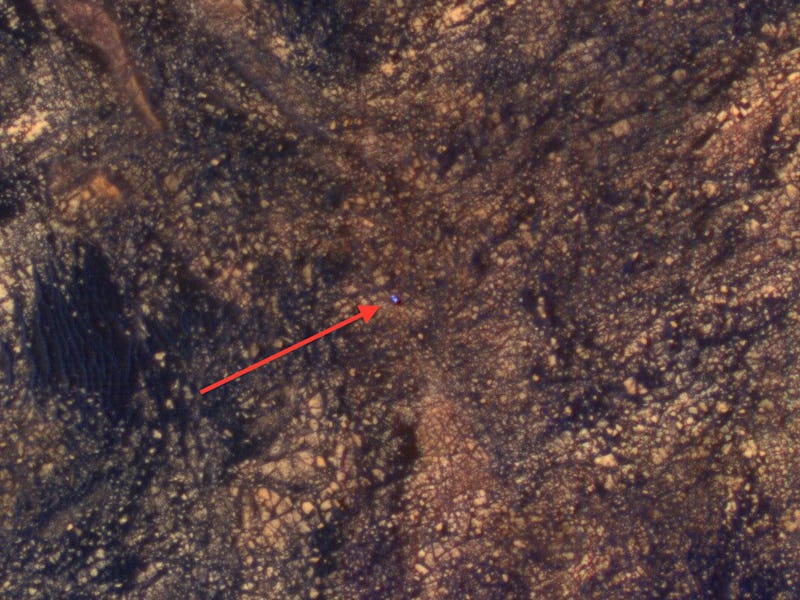NASA's Mars Orbiter Caught a Glimpse of NASA's Mars Rover

NASA’s Mars Reconnaissance Orbiter normally loops around the red planet in celestial solitude, but on June 5, its existence became a bit less lonely.
That’s because the craft spotted a NASA comrade, the Curiosity Mars rover. Curiosity was navigating rocky and sandy terrain between Mount Sharp — a peak within the planet’s Gale Crater, which may be a dry lake — and the Vera Rubin Ridge.
Curiosity is heading to the ridge to analyze outcrops upon which the iron oxide hematite has been spotted from orbit. The rover probably couldn’t tell that the orbiter’s High Resolution Imaging Science Experiment (HiRISE) camera was keeping watch over it. Ah, the tragic beauty of outer space.
Here’s an image the orbiter captured of Curiosity. HiRISE takes pictures using only a few colors — red, blue-green, and infrared — in order to expose details on Mars’s surface, so the rover appears bluer than it actually is. Curiosity is about nine feet wide and ten feet long.
That little blue dot is Curiosity.
Here’s an image that Curiosity took as it roamed the area (while being watched from above):
Look up, Curiosity!! Look UP!
A NASA press release notes that the orbiter glimpses Curiosity “about every three months,” and that the images it takes in these instances help scientists “monitor the surrounding features for changes such as dune migration or erosion.” In other words, the photos help the agency ensure that the rover is on an appropriate path.
Does the orbiter look forward to these encounters to get through the long months alone?
Curiosity’s exploration of Mount Sharp may reveal more information about what Mars was like in its early history. The mountain has layers that “record environmental conditions from different times,” says the press release. Curiosity has already found evidence that wet environments once existed in Gale Crater, and it’s possible that these could have hosted microbial life.